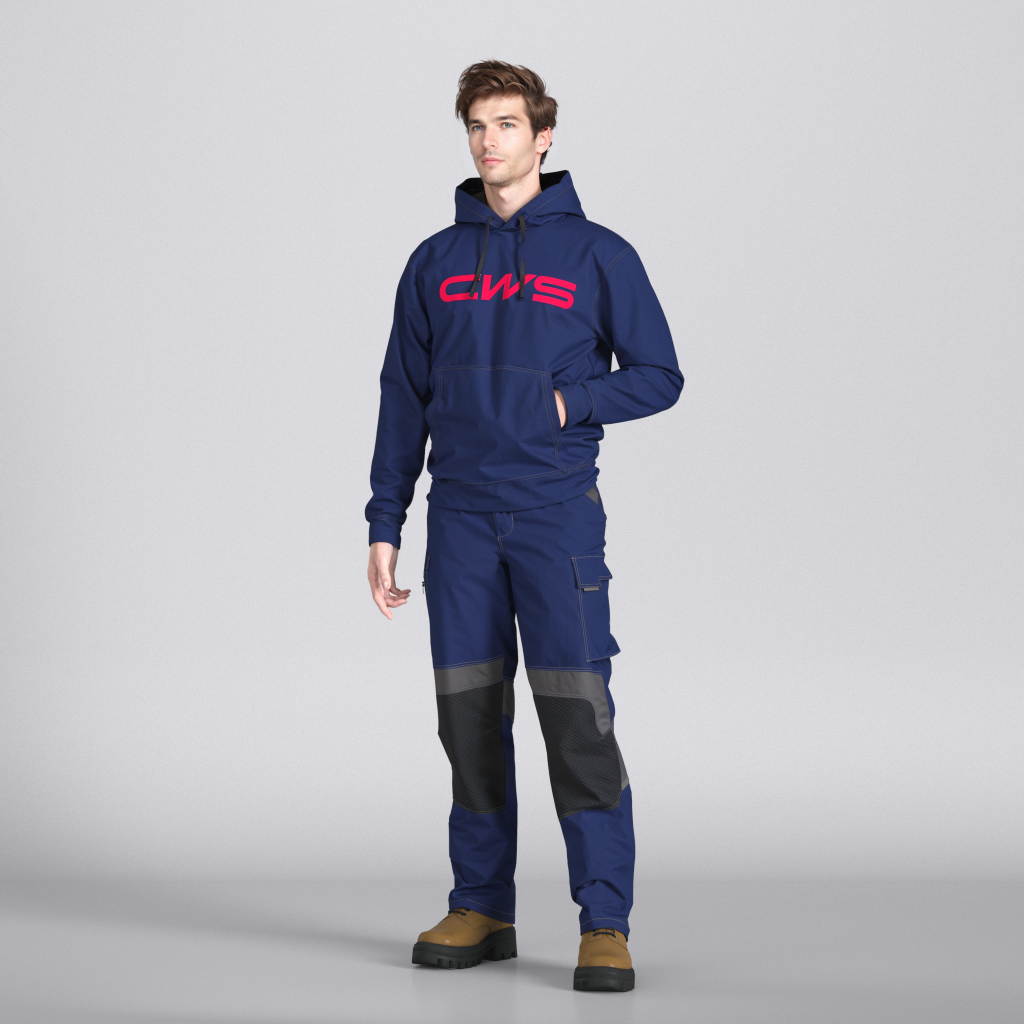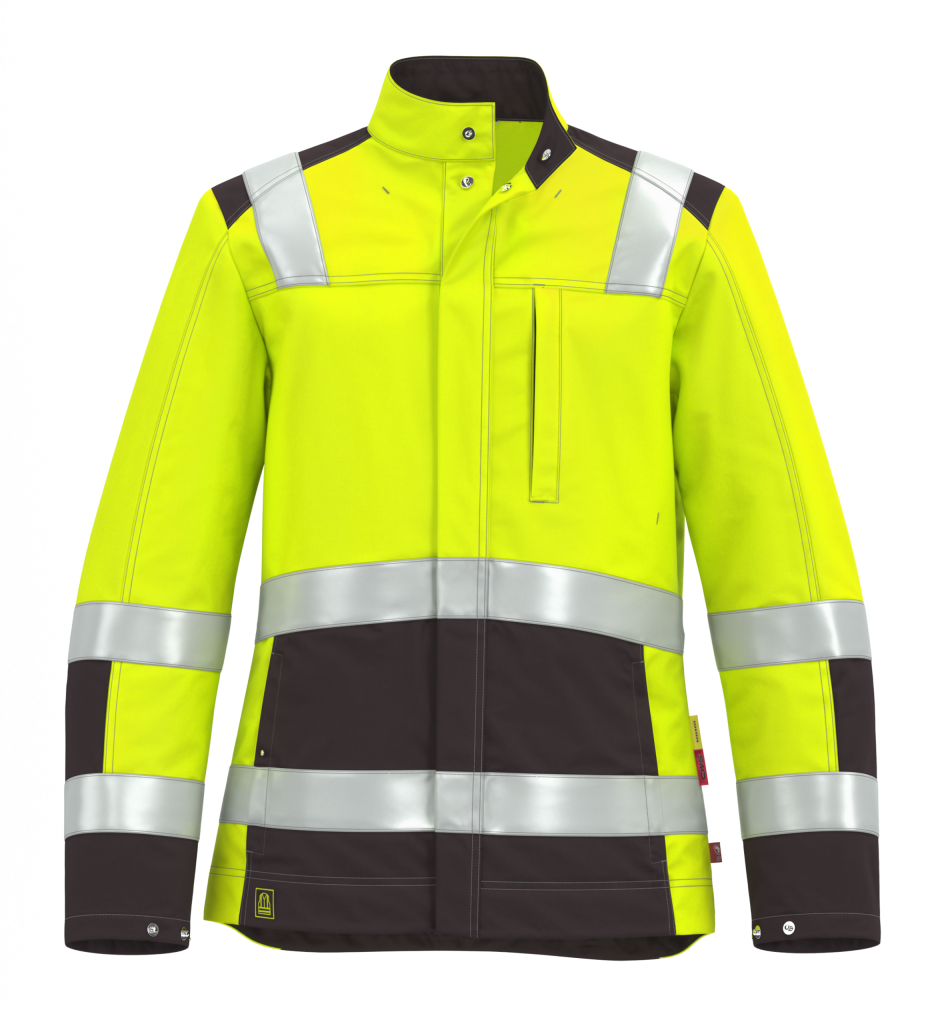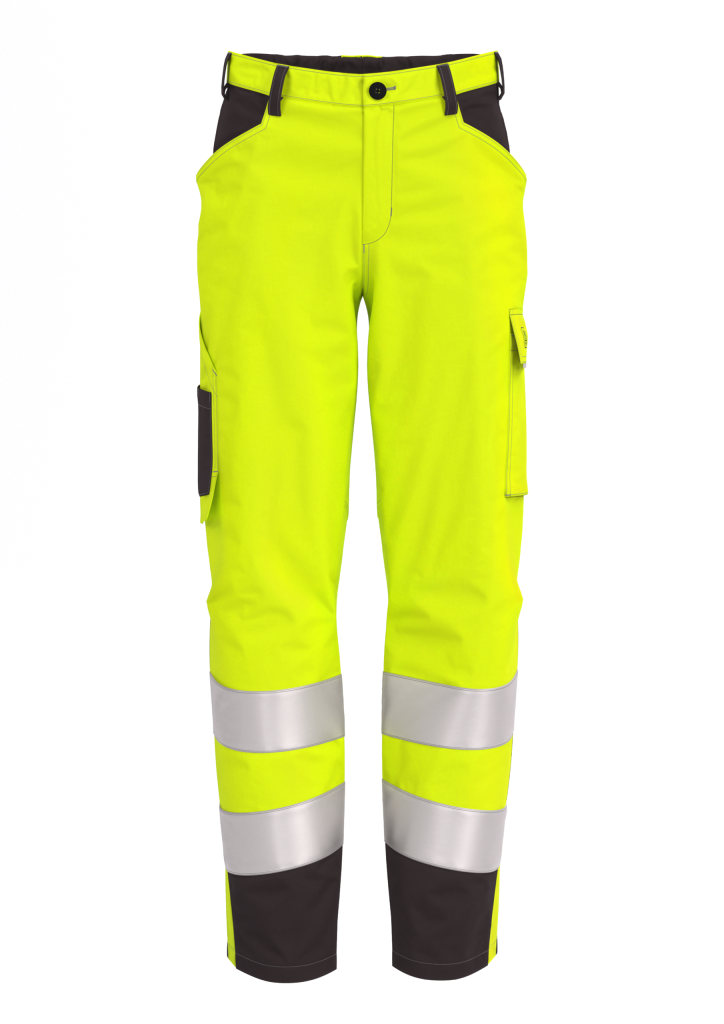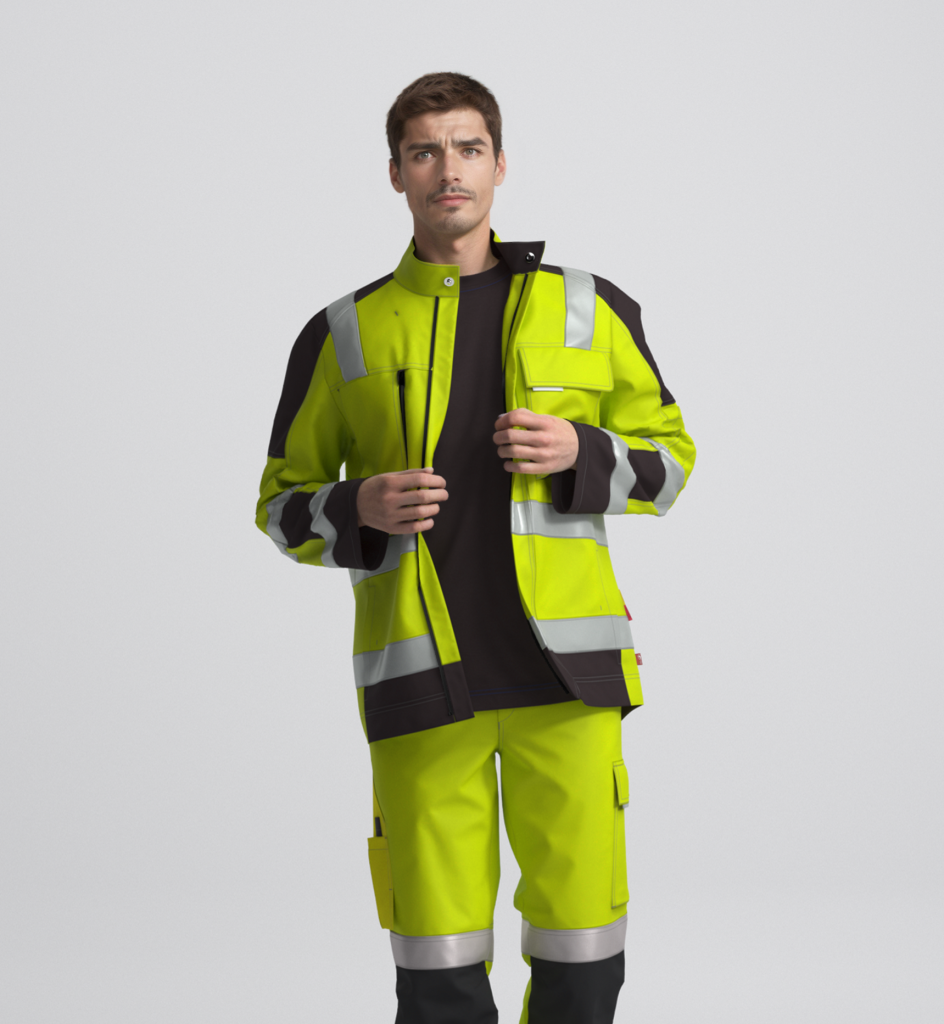Next Level Workwear – Digital Transformation
- Accelerate time-to-market
- Reduce physical prototypes
- Standardize workflows for consistent quality and fit
- Lower costs through optimized material usage and digital costing
- Enable photorealistic
ecommerce images based on 3D + AI
Cost and Time Pressure as Demands Increase
The market for professional clothing is highly competitive: prices must remain attractive, delivery times short, and products customized to individual customer needs. In tenders, price is often the decisive factor. At the same time, expectations regarding quality and flexibility are constantly increasing – especially for special sizes or extras such as knee padding or additional pockets.
This is not just about comfort: fit and quality are crucial for safety. If clothing does not fit properly or restricts freedom of movement, it can become dangerous in everyday work.
About CWS
Leading provider of professional & protective clothing (purchase or leasing)
Portfolio includes hygiene products, cleanroom services, and fire safety solutions
11,000 employees in 15+ countries
Serves trade, industry, healthcare, logistics, labs & high-tech manufacturing
To successfully manage this balancing act, CWS has relied on digital tools and technological innovation for decades. It began with Assyst.CAD for precise patterns and faster development. This was followed by Automarker/Autocost, improving material efficiency and ensuring accurate calculations. And now, the introduction of 3D simulation with Style3D Studio further accelerated processes while opening up new possibilities for design, fit checks, and presentations.
With this continuous integration of technology, CWS consistently delivers top-quality products while maintaining high levels of customer satisfaction.

CAD as a Key Technology for Standardization, Efficiency, and Quality
At the heart of CWS’s transformation was the intensified use of CAD systems. In pattern development, the Style3D | ASSYST technology enables precise grading for a perfect fit – even for special sizes – and guarantees flexibility despite different sizing systems. It optimizes fabric usage through accurate markers and ensures that all sites work with the same precise data. Macros and the database system additionally save time when managing, naming, and assembling pattern variations.
Most importantly, the CAD system made it possible to establish standardized – or at least comparable – workflows across different locations. This leads to greater efficiency, fewer errors, and better coordination in product development.


3D + AI Instead of Physical Prototypes – Digital Photoshoots for E-Commerce
3D visualization has fundamentally changed the way prototypes are handled. In the past, physical samples had to be sewn for every new item. Today, CWS can replace many of them with digital versions, at least in the first round. Fit checks and design approvals now take place virtually – saving time, money, and shipping costs. Physical samples are only produced where tactile testing is essential.
In direct sales, many physical samples have also been replaced by digital ones. In customer presentations, the team can showcase garments directly with the chosen colors and the customer’s logo print – whether it’s a new protective jacket for outdoor use, a durable pair of work trousers, or a kitchen apron. This not only increases persuasiveness in tenders, but also shortens alignment phases significantly.
And CWS has taken a new step: the use of digital photoshoots for e-commerce. Garments are rendered directly in Style3D Studio / iWish, isolated, and displayed in photorealistic quality. The result: high-end images produced more quickly and cost-effectively – ideal for the online shop.




Planning Reliability Through Digital Costing
In the workwear sector, every offer is like a new production run. Before launching a new product line or submitting a quote, CWS calculates fabric requirements with precision. Autocost optimizes costs depending on materials and order quantities, while Automarker automatically generates the required sizes and accounts for material specifics. In this way, CWS can offer competitive prices without any compromise on quality.
Everything Works Seamlessly Together
The systems are fully integrated: a pattern is created in CAD, transferred directly into 3D, and any changes made are immediately reflected in the visualization. Marker creation and costing are also part of the same workflow. This reduces errors and speeds up the entire process.

Sustainability as Part of the Transformation
Digitalization at CWS not only saves time and costs but also benefits the environment. Fewer physical samples mean lower material consumption. This is an important aspect for CWS. The company also emphasizes sustainability and durability in other areas: packaging is reduced, single-item packaging is eliminated, and the longer product lifecycles in the leasing model conserve resources, as do optimized washing routes.

More Speed, Lower Costs
The results at CWS speak for themselves. Through digital transformation, the company has cut development times, reduced the number of samples, and at the same time improved quality and flexibility. Digitalization has not only accelerated processes but also reshaped collaboration across sites and with customers. Clients now enjoy faster workflows, better visualizations, and solutions tailored perfectly to their needs — whether they choose to purchase or lease.




